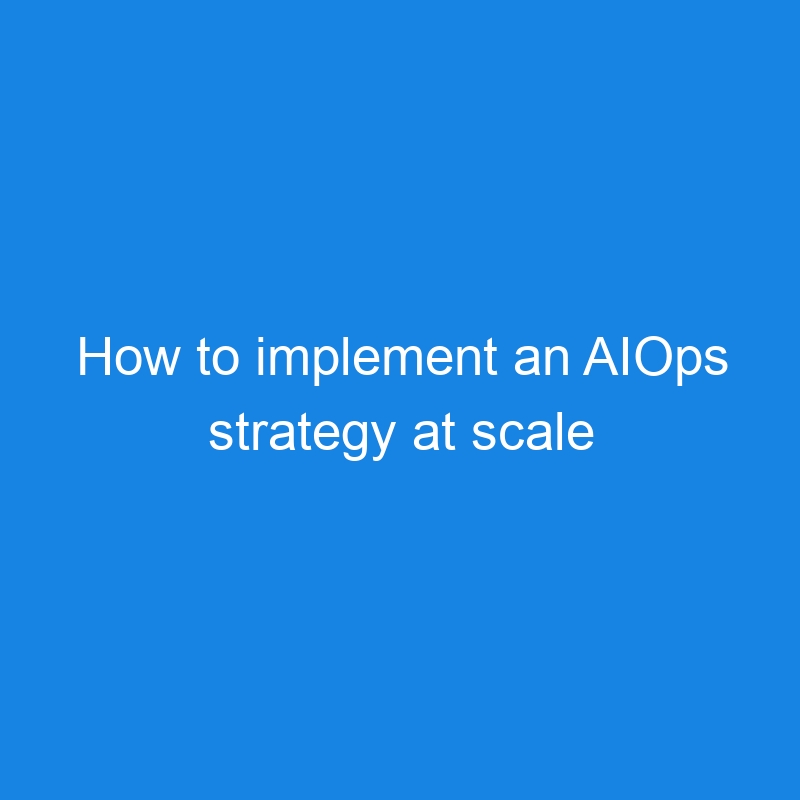
Imagine a day when your IT team resolves critical incidents before users even notice them. In today’s multicloud world, complexity is the norm. But what if an AIOps strategy could transform that complexity into your organization’s greatest advantage?
IT operations teams must monitor, maintain, and optimize a broader mix of applications, infrastructure, and technologies, with newer digital business solutions only adding to the strain. That’s where AI will help, automating tasks such as anomaly detection, root-cause analysis, and incident response. But some IT operations teams are taking this approach a step further, applying multiple forms of AI to accelerate and enhance all business operations.
As AI is evolving, it’s important for organizations to understand the different types of AI and the keys to implementing them to achieve an AIOps strategy that moves from reactive to predictive problem solving.
The three kinds of AI key to a successful AIOps strategy
AI has evolved beyond the traditional correlation and probability-based approaches. Now, organizations turn to causal, generative, and predictive AI to manage cloud environments, secure data, and improve business decision making. Therefore, implementing a successful AIOps strategy requires a deeper understanding of these types of AI.
Causal AI: Think of a global retail chain instantly pinpointing the root cause of a checkout slowdown across thousands of stores. Causal AI uses real-time, contextual data and causal dependencies for precise root-cause analysis and issue prevention. This establishes a business environment safeguarded by automated health monitoring and risk remediation.
Predictive AI: Imagine anticipating server outages hours before they occur, allowing seamless customer experiences. Predictive AI analyzes data patterns and trends, using statistical algorithms and other advanced machine learning techniques to anticipate future system behavior. This means technical users and business leaders can be much more proactive and innovative in the face of constant change.
Generative AI: Consider using generative AI to automate repetitive tasks, freeing up teams for innovation. Generative AI trains on large and diverse data sources, boosting business productivity and efficiency. But when used in combination with causal and predictive AI and trained on real-time, high-fidelity observability data, generative AI can help organizations accelerate productivity and automate workflows.
The key strategy is using GenAI, in conjunction with causal and predictive AI, to understand your data and environment using natural conversation, and not as a way to correlate disparate events or anticipate the future. GenAI alone has limitations in these areas.
Implementing AIOps at scale
The multicloud complexity challenge demands a new approach—one that moves beyond toolchains that are stitched together. That’s where Davis AI™ comes in, combining the strengths of three AI capabilities in one: predictive, causal, and generative AI. Davis provides advanced analytics and proactive problem-solving to deliver out-of-the-box insights. Additionally, Davis doesn’t require extensive configuration or integrations. As a result, IT teams and business decision-makers can take immediate advantage of AI and scale it across the organization.
This power-of-three AI and observability approach democratizes the value of complex data analytics for both technical and nontechnical users. By unifying operations, security, development, and business teams with a single, complete, real-time view of activity across every cloud, app, and system, teams have an intuitive, self-service observability environment for problem-solving security and business events. Unified observability and AI put users in control of finding the answers they need from data, without needing to be experts in query languages.
Take your AIOps strategy from reactive to proactive
In addition to unifying teams, Dynatrace enables organizations to cut down on redundant observability tools and vendors, simplifying the overall view and improving insight coherency. And with new standards and capabilities in AI, teams can scale these efforts across the business for a more streamlined, inclusive, and collaborative business approach to resolving operational issues and driving your business forward.
Tool sprawl is an obvious problem for organizations. But choosing the wrong end-to-end observability platform can make things worse—and more expensive. Contact us today to request a demo of the AI-powered unified observability and security platform from Dynatrace and take your first step toward eliminating tool sprawl.
The post How to implement an AIOps strategy at scale appeared first on Dynatrace news.
